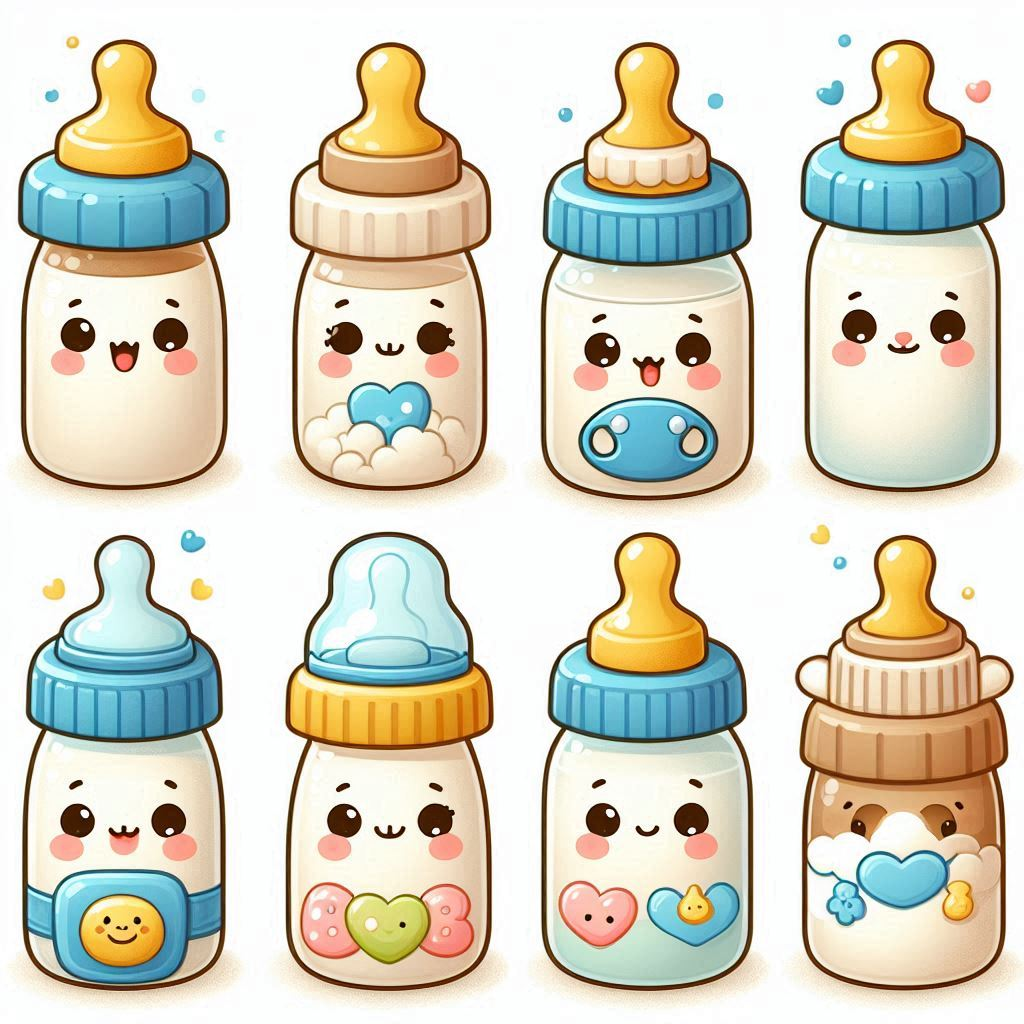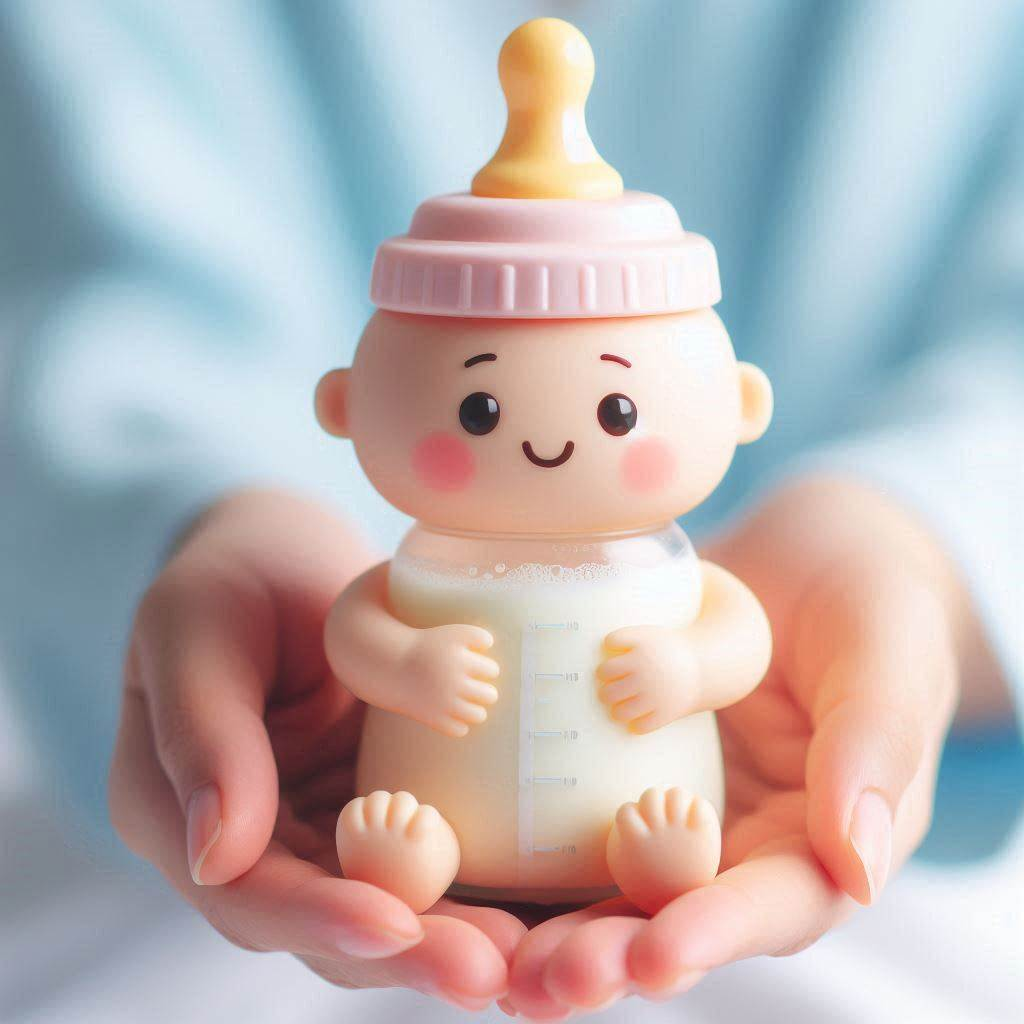How to Choose Baby Bottles for Breastfed Babies
Embarking on the journey of choosing the perfect baby bottle for your breastfed little one? You’re in the right place! Whether you’re a first-time parent or a seasoned pro, finding the ideal bottle that mimics the natural breastfeeding experience can feel like searching for a needle in a haystack. But don’t worry – we’ve got your back! In this comprehensive guide, we’ll walk you through everything you need to know about how to choose baby bottles for breastfed babies.
Quick Answer: How to Choose Baby Bottles for Breastfed Babies
When selecting bottles for breastfed babies, look for wide-based, slow-flow nipples that mimic the breast shape. Choose BPA-free materials, consider anti-colic features, and opt for bottles with fewer parts for easy cleaning. Start with 2-3 bottles to test what works best for your baby before buying a full set.
The Bottle Dilemma: A Personal Tale
Before we dive in, let me share a quick story. When my daughter Lily was born, I was determined to exclusively breastfeed. But life had other plans, and I soon realized I needed to introduce a bottle for those times when I couldn’t be there to nurse. Little did I know, choosing a bottle would become my new part-time job!
“I tried five different bottles before finding ‘the one,'” I told my best friend over coffee. “Lily would either refuse them outright or end up in a gassy, fussy mess. It was like solving a tiny, adorable puzzle!”
Sound familiar? Don’t worry – by the end of this guide, you’ll be a pro at how to choose baby bottles for breastfed babies.
Read more: Affordable Baby Gear For First-Time Parents
Why Finding the Right Bottle Matters
Let’s face it: breastfed babies are connoisseurs of the finest milk delivery systems nature has to offer. When it comes to how to choose baby bottles for breastfed babies, we’re not just picking any old container – we’re looking for a worthy stand-in for Mom’s built-in comfort food dispenser.
Here’s why getting it right is so crucial:
- Smooth Transitions: The right bottle helps your baby switch between breast and bottle without confusion.
- Happy Tummies: Proper bottle design can reduce air intake, leading to less gas and fussiness.
- Breastfeeding Harmony: A good bottle supports, rather than disrupts, your breastfeeding journey.
The Anatomy of the Perfect Bottle
When pondering how to choose baby bottles for breastfed babies, think of it like assembling the perfect puzzle. Each piece plays a crucial role in creating a feeding experience that’s as close to breastfeeding as possible.
1. Nipple Shape and Size: The Crown Jewel
The nipple is where the rubber meets the road (or in this case, where the silicone meets the gums). Here’s what to look for:
- Wide Base: A gradual, sloping shape that allows baby to latch deeply, just like on the breast.
- Soft, Flexible Material: Should mimic the feel of Mom’s breast for a comfortable feed.
- Proper Length: Not too long or short – aim for a Goldilocks “just right” to prevent gagging or shallow latching.
2. Flow Rate: Slow and Steady Wins the Race
When it comes to how to choose baby bottles for breastfed babies, think tortoise, not hare. A slow-flow nipple is your best bet to start with. Why? It mimics the natural flow of breastmilk and prevents your baby from developing a preference for the faster flow of a bottle.
3. Material Matters: Safety First
Modern bottles come in a variety of materials, each with its own pros and cons:
| Material | Pros | Cons |
|---|---|---|
| Plastic | Lightweight, affordable | May contain chemicals, can absorb odors |
| Glass | Durable, easy to clean | Heavier, can break |
| Silicone | Soft, resistant to bacteria | Can be pricey |
| Stainless Steel | Durable, retains temperature | Opaque (can’t see milk level) |
Whatever you choose, make sure it’s BPA-free for your baby’s safety.
4. Anti-Colic Features: Bye-Bye, Bubbles
Many bottles now come with built-in venting systems to reduce the amount of air your baby swallows during feeding. This can be a game-changer for gassy babies!
Read more: Organic Baby Food Brands
5. Easy to Clean: Because You Have Better Things to Do
Trust me on this one – when you’re figuring out how to choose baby bottles for breastfed babies, don’t underestimate the importance of easy cleaning. Fewer parts mean less time spent scrubbing and more time snuggling.
Top Contenders: Bottles That Get the Job Done
Now that we know what to look for, let’s explore some popular options for how to choose baby bottles for breastfed babies:
- Lansinoh with NaturalWave Nipple: Designed to encourage natural sucking patterns.
- Pigeon Bottles: Known for their soft, natural-feeling nipples.
- Dr. Brown’s Natural Flow: Features a unique venting system to reduce colic.
- Evenflo Balance+: Encourages a wide latch with its gradual slope design.
Remember, what works for one baby might not work for another. It’s all about finding that perfect match!
Introducing the Bottle: Timing is Everything
When it comes to how to choose baby bottles for breastfed babies, knowing when to introduce them is just as important as choosing the right one. Here are some tips:
- Wait until breastfeeding is well-established, usually around 3-4 weeks.
- Have someone else offer the first bottle – babies associate Mom with breastfeeding.
- Choose a time when baby is calm and slightly hungry, not starving.
- Be patient and don’t force it – it might take a few tries!
Nipple Confusion: Separating Fact from Fiction
You’ve probably heard the term “nipple confusion” thrown around when discussing how to choose baby bottles for breastfed babies. But what’s the real deal?
Nipple confusion isn’t so much about babies getting “confused” as it is about them developing a preference for the easier flow of a bottle. That’s why choosing a slow-flow nipple and a bottle that encourages a deep latch is so important.
“I was so worried about nipple confusion,” my friend Sarah told me. “But once we found the right bottle, Ethan had no problem switching between breast and bottle. It was such a relief!”
When Things Don’t Go as Planned

Even with all the research on how to choose baby bottles for breastfed babies, sometimes things don’t go smoothly. Here are some common issues and how to address them:
1. Bottle Refusal
- Try different nipple shapes or bottle brands.
- Experiment with bottle temperature – some babies prefer milk warmer or cooler.
- Mimic breastfeeding position when offering the bottle.
2. Gassiness or Spit-up
- Consider switching to a bottle with better venting.
- Try paced bottle feeding to prevent overfeeding.
- Burp baby more frequently during feeds.
3. Leaking
- Check that you’re using the correct nipple size for your baby’s age.
- Ensure all parts are properly tightened.
- Some high-quality bottles are designed to be leak-proof – it might be time for an upgrade!
The Bottom Line: Trust Your Instincts
At the end of the day, figuring out how to choose baby bottles for breastfed babies is as much about following your instincts as it is about following advice. You know your baby best!
Remember:
- Start with 2-3 bottles to test what works before buying a full set.
- Don’t be afraid to mix and match nipples and bottles from different brands.
- Be patient – finding the right bottle might take some trial and error.
With a little persistence and a lot of love, you’ll find the perfect bottle to complement your breastfeeding journey. Here’s to happy feeding, whether it’s from the breast or the bottle!
Read more: Organic Baby Food Brands
FAQs: Your Burning Questions Answered
Q: How many bottles should I buy to start?
A: It’s best to start with 2-3 bottles to see what your baby prefers before investing in a full set.
Q: Can I mix and match nipples and bottles from different brands?
A: Absolutely! Many parents find success combining different brands, like using Pigeon nipples with Dr. Brown’s bottles.
Q: What flow rate should I choose for a newborn?
A: Always start with a slow-flow nipple for newborns. This mimics the natural flow of breastmilk and helps prevent bottle preference.
Q: How often should I replace bottle nipples?
A: Generally, it’s recommended to replace nipples every 2-3 months or sooner if you notice signs of wear like thinning, discoloration, or cracks.
Q: Is it normal for my baby to take longer to feed from a bottle than the breast?
A: Yes, this can be normal, especially if you’re using a slow-flow nipple. Paced bottle feeding can help mimic the rhythm of breastfeeding.
Remember, every baby is unique, and what works for one might not work for another. The key to how to choose baby bottles for breastfed babies is patience, persistence, and a willingness to experiment until you find what works best for you and your little one. Happy feeding!

Jessica Winter is a passionate parenting blogger with two years of experience guiding new and seasoned parents through the joys and challenges of raising babies. Her insightful posts blend personal anecdotes with expert advice to offer a warm and practical perspective on modern parenting.


